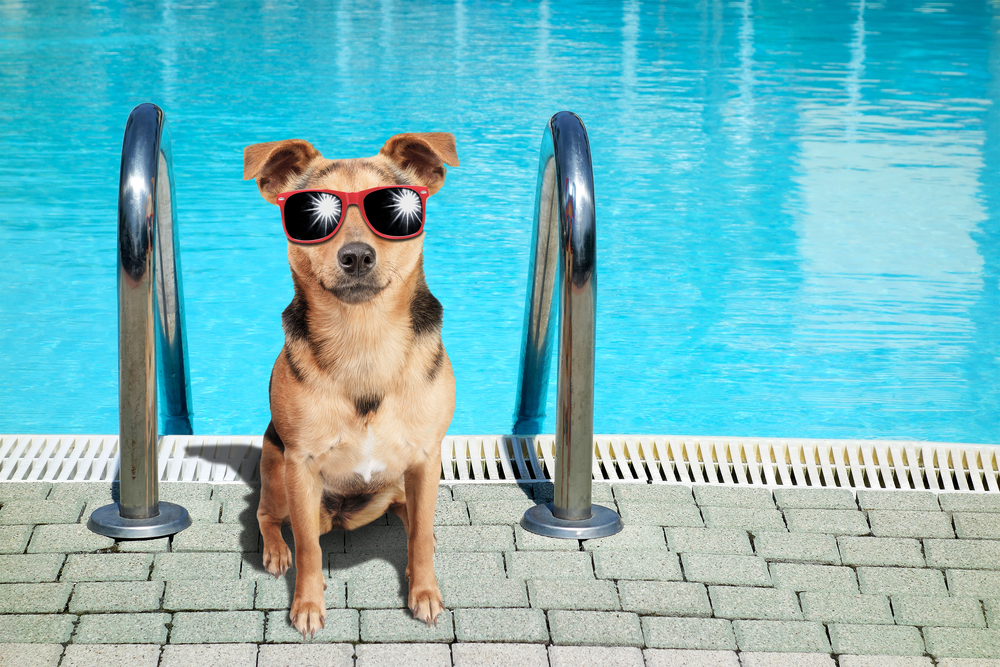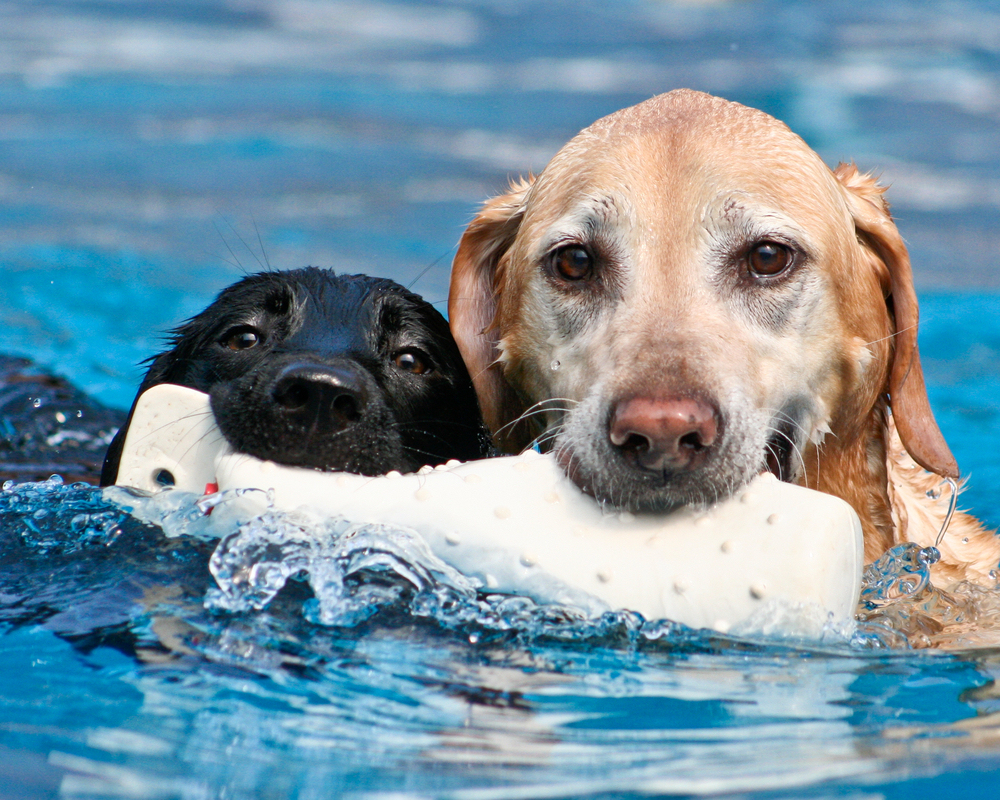Humans have shared a close bond with their canine family members for centuries; however, in the past few years, it seems that pampering our pets has become an obsession. From doggy day care to spa days to high-tech gear, some dogs receive the royal treatment. One forecast estimates the global pet industry will reach $358.62 billion in revenues by 2027.
Enrolling your dog in classes, such as swimming lessons, is one of the niche industries gaining popularity. With rates as high as $150 per hour, this may look like a luxury at first. Are dog swimming lessons worth the price tag? Here’s what you need to know.
Do dogs need to learn to swim?
Historians believe the dog paddle swim stroke originated with our ancestors who were mimicking the alternating leg movements they observed animals making as they traveled through the water. But don’t let that fool you. Just because some dogs swim doesn’t mean all dogs are natural-born swimmers.
Some breeds, such as the English setter and standard poodle, were bred for swimming. Others, like the bulldog, pug, and basset hound, have bodies that aren’t suited for treading water. And some dogs, no matter their breed, just don’t like to get wet.
This can be a dangerous situation, especially for families who love the water. Although many incidents aren’t reported, officials in the pet insurance industry estimate as many as 10,000 pets die by drowning each year. Making sure your dog knows how to swim, especially if your dog has access to the backyard pool or accompanies you on a boat, is one way to prevent your faithful friend from becoming a statistic.

Can you teach your dog to swim yourself?
Teaching a dog to swim takes a lot of patience, but it’s definitely something you can do yourself. Here are a few tips:
- Invest in a personal flotation device, otherwise known as a life jacket, made especially for dogs. Make sure your dog is wearing it whenever he’s around the water.
- Start in the shallow end of a pool, preferably on the steps. Encourage your dog to get his feet wet and show him how to walk down the steps into the water. Knowing where the steps are is a big benefit, especially if he ever falls into the pool when you’re not around.
- Be patient. Never throw your dog in the pool or force him to join you in the water. Use treats or his favorite toy as a lure. If your dog doesn’t like the water, don’t force it. Some are content to lie in the shade nearby and watch everyone else have all the fun.
- Keep the lessons brief. Experts recommend spending no more than 10 minutes on each swim lesson.
- Take frequent breaks. Even if your dog takes to the water and doesn’t want to get out, be watchful. Just like humans, dogs can sunburn and tire. Taking a rest in the shade is best for all concerned.
How much do dog swimming lessons cost?
If you don’t have the time or the patience to teach your dog how to swim, look for area businesses that specialize in dog swim lessons. A quick online search should provide you with several options:
- Private lessons at your home. Expect to pay an average of $150 for a one-hour lesson.
- Swim lessons at a facility. Prices vary depending on whether your dog is participating in a group swim ($15/30 minutes), a swim lesson ($25–$35/30 minutes), or a private swim for you and your dog ($50/30 minutes).
- Swim time at a doggie day care facility. If you’re in the market for a day care center for your pup, look for one that includes swim time as part of the daily activities ($50–$65/day).
Please note: Every facility is different. These prices are an estimate of what you might expect to pay.

Are dog swimming lessons worth the price tag?
Dogs play an important role in our lives. Studies show having a dog improves heart health by lowering blood pressure and reducing cholesterol and triglyceride levels. Dogs help prevent loneliness and isolation. They also reduce stress by increasing neurochemicals in the brain — dopamine and serotonin — that are responsible for feelings of happiness and well-being.
So, it’s no surprise that dog owners go to great lengths to protect their pets from harm whenever possible. That includes making sure they know how to swim if playing in the water is part of their lifestyle. If you have the time and patience to teach your dog to swim, you can save yourself some money. If not, the cost associated with swim lessons is worth every penny.


